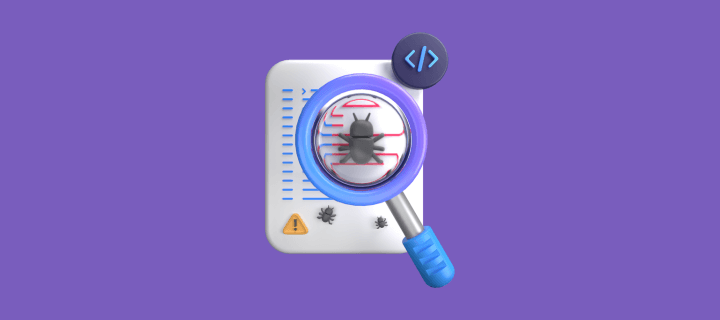
The Art and Science of Refactoring: A Deep Dive into Code Improvement
The Art and Science of Refactoring: Elevating Code Quality through Continuous Improvement and Collaborative Practices.

TL;DR:
Refactoring is the process of improving code without changing its external behavior. It is a powerful technique that enhances code readability, maintainability, and performance. Effective code reviews involve building a collaborative culture, considering architectural aspects, leveraging automation tools, and encouraging refactoring proposals.
Mastering the art of refactoring requires spotting code smells, setting purpose-driven goals, relying on testing as a safety net, and learning from established techniques. By embracing the art and science of refactoring, we can create elegant and efficient code that is easier to understand and maintain.
Code is like a living organism that evolves over time. As software engineers, we strive to create elegant, efficient, and maintainable code. However, as projects grow and requirements change, our once pristine codebase can become a tangled web of complexity. This is where the art and science of refactoring come into play.
In this article, we will embark on a journey through the world of code improvement. We will explore the intricacies of refactoring, diving deep into the science behind it and uncovering advanced-level insights and strategies. Drawing on my own experiences as a software engineer, I will provide fresh perspectives on the topic, avoiding generic advice that developers have heard time and again.
The Power of Refactoring: Transforming Code for the Better
Have you ever come across a piece of code that made you scratch your head in confusion? We all have. Refactoring is the process of transforming code without changing its external behavior. It’s like tidying up a messy room, reorganizing furniture, and optimizing space. By refactoring, we enhance the code’s readability, maintainability, and performance.
Let me share a personal anecdote. A few years ago, I joined a team tasked with maintaining a legacy system. The codebase resembled a house of cards, ready to collapse at the slightest touch. We were drowning in technical debt, with every change we made introducing new bugs.
One day, as frustration reached its peak, I proposed a refactoring initiative. It was met with skepticism, but I convinced my team to give it a try. We started small, identifying a particularly convoluted module and applying a series of refactorings. The result was astonishing. The code became more readable, bugs vanished, and new features were added with ease. This experience solidified my belief in the transformative power of refactoring.
The Science Behind Effective Code Reviews
Building a Collaborative Culture: Enhancing Code Quality through Collaboration
Code reviews are an integral part of the refactoring process. They allow us to leverage the collective knowledge and expertise of our team members to improve the codebase. However, not all code reviews are created equal. Let’s delve into the science behind effective code reviews and explore some advanced strategies.
In my experience, establishing a collaborative culture is crucial for successful code reviews. I recall a situation where a junior developer on our team submitted a pull request for a critical feature. Instead of pointing out every flaw, we approached the review with empathy and kindness. We provided constructive feedback and highlighted the developer’s strengths. This approach not only improved the code but also boosted the developer’s confidence and encouraged growth within the team.
Emphasizing the Big Picture: Architectural Considerations in Code Reviews
While it’s essential to catch syntax errors and logical flaws, don’t get lost in the details. Code reviews should also address architectural concerns, design patterns, and overall code structure. By examining the big picture, we can identify opportunities for refactoring that can lead to significant improvements in the long run.
Consider a scenario where you come across a large monolithic function during a code review. Instead of nitpicking individual lines of code, step back and analyze the function’s purpose and responsibilities. Are there potential ways to break it down into smaller, more cohesive functions? By focusing on the big picture, you can guide the developer toward better code organization and modularity.
Automating the Process: Leveraging Tools for Efficient Code Reviews
Leverage the power of automation tools to streamline the code review process. Static analysis tools can detect potential bugs, code smells, and performance bottlenecks automatically. This frees up valuable time for reviewers to focus on higher-level considerations and promotes consistency in the codebase.
Static analysis tools like linters, code formatters, and complexity analyzers can be integrated into your development workflow, and these tools not only catch common issues but also enforce coding standards and best practices. By automating certain aspects of the code review process, you can ensure that the focus remains on higher-level improvements and critical thinking.
Encouraging Refactoring Proposals: Fostering a Culture of Continuous Improvement
Code reviews shouldn’t just identify problems; they should also spark discussions around potential solutions. Encourage developers to propose refactorings as part of the review process. This fosters a sense of ownership and collaboration within the team, leading to continuous code improvement.
In one of my recent code reviews, a team member suggested refactoring a particularly complex algorithm. Instead of dismissing the proposal, we engaged in a dialogue to understand their thought process. As a result, we collectively agreed on a refactoring plan that not only improved the algorithm’s efficiency but also made it more maintainable. By encouraging refactoring proposals, we can tap into the collective intelligence of the team and drive continuous improvement.
Mastering the Art of Refactoring
Now that we have explored the science behind code reviews, let’s dive into some advanced strategies for mastering the art of refactoring.
Spotting Code Smells: Identifying Areas for Improvement
Code smells are indications of deeper design issues that need attention. They can range from duplicated code and long methods to poor naming conventions and tight coupling. By familiarizing yourself with various code smells, you can spot potential areas for improvement. Remember, a good nose for code smells can lead to cleaner and more maintainable code.
Let’s consider the case of duplicated code. Duplicated code is a common code smell that often indicates an opportunity for refactoring. Instead of having the same logic repeated in multiple places, we can extract the duplicated code into a reusable function or class. This not only improves code maintainability but also reduces the chances of introducing bugs when making changes.
Purpose-Driven Refactoring: Focusing on Goals for Effective Code Improvement
Refactoring should never be a blind pursuit. Instead, it should have a clear purpose tied to improving the codebase. Whether it’s enhancing performance, reducing complexity, or increasing testability, every refactoring should have a well-defined goal. This ensures that refactoring efforts are focused and impactful.
Consider a scenario where you notice a performance bottleneck in a critical section of code. Instead of diving straight into the refactoring process, take the time to analyze the problem and understand the underlying causes. Is it an algorithmic issue or a database query that needs optimization? By identifying the purpose of the refactoring, you can make informed decisions and achieve significant performance gains.
Testing as a Safety Net: Ensuring Quality and Stability during Refactoring
Tests are a crucial safety net when refactoring. Before making any changes, ensure that your tests are comprehensive and passing. Refactoring should not introduce regressions or unexpected behavior. By having a strong suite of tests, you can refactor with confidence and maintain the integrity of your codebase.
A helpful practice when refactoring is to follow the “red-green-refactor” cycle. Start by running your tests and ensuring they all pass (green). Then proceed with your refactoring, making incremental changes while keeping an eye on the test results. After each refactoring step, rerun the tests to make sure you haven’t inadvertently introduced any issues. By maintaining a green test suite throughout the refactoring process, you can confidently make improvements without fear of breaking existing functionality.
Learning from the Experts: Leveraging Established Refactoring Techniques
Refactoring is not a solitary endeavor. There is immense value in learning from others and leveraging established refactorings. Study design patterns, read books on refactoring, and engage in discussions with fellow developers. By expanding your knowledge, you can adopt tried and tested techniques and avoid reinventing the wheel.
One way to learn from others is to participate in code katas or coding exercises with a focus on refactoring. These exercises often provide opportunities to refactor existing codebases, allowing you to explore different approaches and learn from the strategies employed by experienced developers. Additionally, attending conferences and joining online communities can expose you to a wealth of knowledge and insights from experts in the field.
Conclusion
In the world of software development, the art and science of refactoring play a vital role in creating maintainable and robust code. Through this deep dive into code improvement, we have explored the beauty of refactoring, the science behind effective code reviews, and advanced strategies for mastering the art of refactoring.
Remember, refactoring is not a one-time activity but a continuous process. It requires discipline, collaboration, and a commitment to code quality. By embracing the art and science of refactoring, we can transform tangled codebases into elegant and efficient systems.
So, the next time you encounter a piece of code that gives you pause, remember the transformative power of refactoring. Embrace the art and science, and let your code evolve into a masterpiece.
As renowned software engineer Martin Fowler once said,
“Any fool can write code that a computer can understand. Good programmers write code that humans can understand.” Let us strive to be those good programmers.


